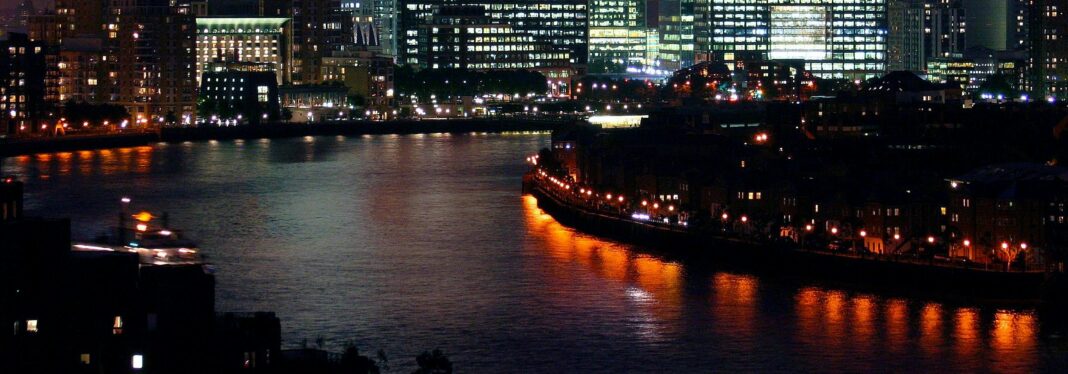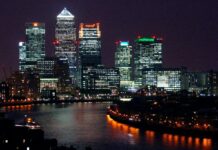London emerges through time as a city deeply engaged with performance, spectacle, and the rhythms of collective amusement. Its entertainment history, shaped by layers of innovation and shifting societal temperaments, commands attention from the Elizabethan stage to the digitised present.
Popular on LondonNet
In the age of Shakespeare, the Globe Theatre stood on the Thames’ southern bank, drawing throngs with its linguistic vitality and architectural openness. Later centuries welcomed formal playhouses and the grandeur of the West End, each echoing the refinements of taste and class.
The city’s appetite for diversion expanded in step with its population. Music halls in the nineteenth century enlivened the working class evening, with Wilton’s and the Canterbury setting a standard for variety and vaudeville. Jazz clubs emerged in Soho, then rock’s upheaval rattled Camden and King’s Road, anchoring a cultural heartbeat.
As technologies advanced, entertainment embraced mechanised images, first in picture palaces, then in purpose-built cinemas across Foregate and Brook Street. The twenty-first century brought virtuality and digital interfaces, yet London’s venues retain a spirit of ingenuity. This continuum of cultural adaptation marks the city as an enduring stage upon which new forms unfurl with deliberate resonance.
The Birthplace of British Theatre
London shaped the course of British theatrical tradition through centuries of artistic fervour and institutional development. The city gave form to a culture of performance that began in devotional ritual and advanced towards secular spectacle. Its streets, riverbanks, and purpose-built theatres bore witness to dramatic evolution and the shifting temperaments of audience and playwright alike.
Elizabethan Era: Globe Theatre, Shakespeare’s Influence
In 1576, Leicester’s Men raised Britain’s first permanent playhouse in Finsbury Fields, marking the formal genesis of public drama. Two decades later, the Globe Theatre appeared on the south bank of the Thames, built from the timbers of its predecessor, The Theatre.
Shakespeare, as both writer and shareholder in the Lord Chamberlain’s Men, defined the theatrical output of this era. His texts, rich in moral complexity and lyrical ambition, sustained frequent performance and inspired fierce loyalty. The Globe stood as the emblem of this expressive age, where verse and actor thrived within open courtyards and tiered galleries.
Theatres Along the Thames and Early Public Engagement
From the mid-sixteenth century, Londoners gathered in circular playhouses flanking the Thames. These spaces, ringed by galleries and open to the sky, hosted companies that relied on noble patronage. The Admiral’s Men and the Lord Chamberlain’s Men set the standard. Plays emerged with urgency, mirroring the city’s restless energy. Audiences paid to stand or sit in tiered boxes, affirming drama as both craft and commerce.
Transition to the Grandeur of the West End in the 19th and 20th Centuries
As London industrialised, its appetite for theatrical luxury grew. The Licensing Act of 1843 broadened dramatic access beyond the patent theatres. West End establishments embraced ornate interiors, proscenium arches, and gas lighting. Playwrights refined narrative structures, while actor-managers like Irving elevated the profession’s dignity.
Iconic Venues like the Lyceum and Theatre Royal Drury Lane
The Lyceum hosted the collaborative artistry of Ellen Terry and Henry Irving. Drury Lane, from Garrick to Novello, became synonymous with spectacle. These stages received Shakespeare, melodrama, and sensation with equal gravity, offering audiences technical marvels and emotional range.
The Continuing Popularity and Diversity of Modern Stage Shows
From Shakespearean revivals to immersive installations, London’s theatres adapt form and content. Institutions such as the National Theatre and venues like the Roundhouse reflect a lineage shaped by innovation. Theatres welcome experimental works, reimagined classics, and cross-disciplinary performance, sustaining public engagement across generations.
Music Halls and Social Transformation
In the decades preceding cinema, music halls emerged as central spaces for working-class entertainment across London. They drew energy from the city’s industrial expansion and its dense, diverse communities. Venues such as the Canterbury Music Hall in Lambeth and Wilton’s Music Hall in Whitechapel offered a structured blend of variety, comic monologues, popular songs, short theatrical sketches, and character-driven performance. These halls shaped the rhythm and texture of London nightlife.
From Tin Pan Alley to Brixton Murals
On Denmark Street, the Rolling Stones recorded at Regent Sounds Studio, while the Sex Pistols lived above number 6. Bowie and Elton John favoured the Gioconda Café nearby. A short walk leads to Berwick Street, immortalised on the cover of Oasis’s (What’s the Story) Morning Glory? and now home to Sister Ray and Reckless Records.
Camden to St John’s Wood: The Northern Pulse
In Camden Town, music venues such as The Jazz Cafe, The Roundhouse, and Dingwalls have hosted Hendrix, Pink Floyd, The Doors, and Blur. KOKO staged Madonna’s first UK performance. At The Dublin Castle, Travis and Arctic Monkeys built early followings. A statue of Amy Winehouse stands in the Stables Market, close to the staircase where The Clash posed for their debut album cover.
Northwest, the Beatles crossed Abbey Road and recorded nearby; the zebra crossing remains a pilgrimage site. Baker Street’s Beatles Store offers memorabilia beneath plaques honouring Lennon and Harrison.
Chelsea, Kensington, and the Stones’ London
At 102 Edith Grove in Chelsea, the Rolling Stones shared their first London flat. King’s Road, once their haunt, also housed McLaren and Westwood’s shop at number 430, where Sid Vicious and Chrissie Hynde worked.
The Chelsea Drugstore inspired You Can’t Always Get What You Want. Cheyne Walk, just along the Thames, includes Mick Jagger’s former residence and studio. The Royal Albert Hall, across Kensington, has hosted performances by Dylan, Hendrix, Queen, and McCartney.
South and East: From Bowie to Grime
In Brixton, a mural on Tunstall Road honours David Bowie. Nearby in Barnes, Olympic Studios once recorded Queen, Led Zeppelin, and Prince. Tooting Tram & Social and The Half Moon in Putney continue the tradition with live sets. In Croydon, a dedicated trail tracks the borough’s musical legacy.
East London holds grime’s roots. Rinse FM began at the Old Truman Brewery in Brick Lane, championing Skepta, Dizzee Rascal, and Wiley. Rough Trade East sits nearby. Oslo in Hackney and Fabric in Farringdon remain active venues for the genre’s evolution.
Halls, Clubs, and Houses
The 100 Club on Oxford Street has hosted The Clash, Oasis, and the White Stripes. In Mayfair, Handel and Hendrix share a building on Brook Street, both commemorated with a blue plaque. Royal Opera House in Covent Garden stages ballet and opera in a tradition extending back centuries.
Across the city, blue plaques mark the homes of musicians including Buddy Holly (Hammersmith), Keith Moon (Wardour Street), and Gustav Holst (Barnes). A black plaque on Heddon Street marks the site of Bowie’s Ziggy Stardust album cover.
The London Cinematic Boom
London’s cinema culture evolved through a persistent layering of architecture, technology, and ritual. The city’s filmgoing habits followed a trajectory from enclosed theatrical spectacle to dispersed, participatory experience. Across a century, cinema houses shaped districts, introduced stars to the public gaze, and gave visual form to national and international imaginations. The industry’s pulse beat across central squares and quiet lanes, animated by large studios and small, independent exhibitors alike.
Early 20th-century picture palaces and glamour
By the early 20th century, purpose-built cinemas occupied prime locations across the city. These picture palaces brought a sense of pageantry to everyday life, with facades often dressed in columns, domes, and rich interior ornamentation. Cricklewood Studios and Islington Studios supported the industry’s expanding ambitions, while Elstree and Denham built industrial-scale complexes.
Gaumont-British and the Rank Organisation supplied distribution and exhibition networks, creating a national circuit anchored in spectacle. Studios employed stars such as Gracie Fields and George Formby, whose fame grew alongside cinema’s reach.
Leicester Square’s rise as a film premiere hub
Leicester Square developed into the locus of the British premiere. From early newsreels to Technicolour epics, the square hosted state occasions and world debuts. Venues such as the Odeon and Empire theatres became stages for directors and actors, from Laurence Olivier to Audrey Hepburn, whose appearances created recurring cultural events. The square’s layout, with cinemas facing onto an open plaza, supported mass congregation and public ritual.
Role of independent cinemas like Prince Charles and Electric
The Prince Charles Cinema, tucked behind Leicester Square, curated a programme of repertory screenings and niche retrospectives. Electric Cinema carried early cinema glamour into the modern era. These spaces sustained engagement with film history and cult phenomena, offering alternatives to mainstream commercial release.
The rise of immersive cinema and outdoor screenings
Organisers adapted new forms of presentation. Audiences gathered at rooftop cinemas, parks, and warehouses, where screenings unfolded in constructed environments. These events departed from the seated auditorium, using spatial design to immerse viewers in the atmosphere. The screening became an experience, and cinema entered the urban rhythm as installation, gathering, and spatial journey.
Hidden Scenes and Underground Culture of London
Beneath London’s grand facades and storied institutions, a parallel city unfolds, a world governed by a different tempo, where invention supplants tradition and community supersedes commerce. The underground culture of London, shaped in the countercultural crucible of the 1960s, persists in defiant motion.
This undercurrent breathes through graffiti-laced alleyways, offbeat music venues, ephemeral art spaces, and independent print. It welcomes the curious and challenges the familiar.
The Grove, the Gigs, and the Graphic Press
In the mid 1960s, Ladbroke Grove and Notting Hill crystallised into the heart of London’s counterculture. Figures like Mick Farren and John “Hoppy” Hopkins shaped a radical aesthetic, while publications such as International Times and Oz illustrated the collision of art, protest, and psychedelia.
Graphic artists Martin Sharp and the Hapshash and the Coloured Coat duo adorned the scene with swirling motifs that fused Art Nouveau intricacy with acid fuelled vision. Bands including Pink Fairies, The Deviants, and Hawkwind channelled the spirit of rebellion, staging benefit gigs and street performances with visceral, communal energy.
Cafés, Communes, and the Overground Turn
The Mountain Grill café on Portobello Road welcomed the weary and the wired, its modest interior housed musicians, poets, and visionaries alike. Within these smoke filled rooms, collaborations brewed and counter narratives flourished. Gandalf’s Garden, a pastel hued sanctuary in Chelsea, distilled a softer ethos.
Edited by Muz Murray, the magazine and its companion space embraced spirituality, vegetarianism, and nonviolence. With references to mandalas and meditative living, this “overground” movement offered an introspective counterpart to its riotous sibling, reinforcing the plurality within London’s underground continuum.
The Digital Transformation of London Entertainment
The transformation of British entertainment into digital form has unfolded across decades, with London as the primary site of experimentation and reinvention. This progression has drawn from arcade culture and analogue media, advanced through mobile technologies, and culminated in an ecosystem where digital access defines audience engagement.
Arcade Gaming, Board Game Cafés, and Online Slots
In the 1980s, West End arcades such as Casino on Old Compton Street attracted crowds to luminous cabinets that blended mechanical spectacle with electronic innovation. The tactile culture of these early venues informed later iterations of gaming in physical settings. During the 2010s, cafés like Draughts in Hackney and Waterloo revived social play through curated collections of European and American board games.
The online casino industry occupies a defined corner of London’s digital entertainment. Engineers translated the machinery of fruit slots into browser formats, preserving their rhythm and sonic pattern.
Popular uk slots such as Starburst Galaxy and Fairy Dust reflect this transition. Their animated reels draw on the visual language of seaside arcades and bookmaker interiors, blending familiar symbols with intricate motion. Designers calibrated the spin cycle to maintain the tempo of mechanical originals, adjusting for mobile responsiveness and brief user intervals.
Mobile Technology and On-Demand Platforms
By the early 2000s, handheld devices began reshaping content delivery. BBC iPlayer launched in 2007, introducing time-shifted viewing. Channel Four and ITV followed with proprietary platforms, and Netflix entered the UK market in 2012. These services replaced programming schedules with algorithmic cues, offering personalised libraries shaped by viewing history. The shift granted users control over selection and tempo, altering the grammar of visual narrative.
Streaming and Digital Storytelling
In 2009, the National Theatre recorded productions for its NT Live initiative. By 2020, National Theatre at Home enabled international access to stage works through subscription. Concert venues such as the Union Chapel and Fabric adopted high-definition streaming during performance restrictions, establishing parallel audiences in physical and virtual space.
Netflix’s Bandersnatch in 2018 exemplified the synthesis of film and gaming structures, integrating decision trees into cinematic design.
Digital Adaptation of Traditional Forms
Theatre productions now enter digital circulation through platforms like Digital Theatre and TodayTix. The BFI Player extends the reach of the London Film Festival with geo-restricted premieres and archival access. These tools preserve premiere chronology while reshaping the site of viewing. Public programming expands beyond the auditorium into homes, schools, and mobile interfaces.
London’s Music Scene: O2, Brixton Academy, New Platforms
The O2 Arena maintains primacy in large-scale touring, while Brixton Academy holds space for mid-capacity acts. Artists such as Dave, Little Simz, and Jorja Smith emerged through online music platforms including GRM Daily and Link Up TV. These networks displaced traditional label hierarchies, granting visibility through metrics and community engagement. Music circulation now flows through uploads, reaction videos, and short-form edits that reframe the live performance within a digital vernacular.
The History of Literature in London
The literary evolution in London reveals a clear trajectory of influence, development, and legacy. London shaped the direction of British publishing from its earliest stages and sustained its role as the intellectual and cultural centre for writers across centuries.
Early Print and the Emergence of the Literary Centre
In 1476, William Caxton established England’s first printing press in Westminster Abbey. This marked the start of London’s formal literary infrastructure. By the mid-1500s, regulation framed the publishing landscape. Under Queen Elizabeth I, authorised printing operated solely in London and the universities of Oxford and Cambridge. The Stationers’ Company assumed strict control over printed materials, maintaining dominance throughout the seventeenth century.
Yet, even under rigorous oversight, independent presses emerged, often producing poetry and fiction. The appearance of periodically printed texts in the late seventeenth century laid the foundation for modern magazines. The Copyright Act of 1709, introduced in London, represented the first legal protection for authors and publishers in the world.
Literary Figures and Geographic Influence
William Shakespeare linked his dramatic works directly to the city. The original Globe Theatre, built in 1599 on the South Bank, premiered his early plays including Romeo and Juliet and Henry V. Charles Dickens embedded the texture of London’s streets into his narratives. From the workhouses of Oliver Twist to the poverty of Little Dorritt, his fiction presented the capital in vivid, exacting terms.
Virginia Woolf, operating from Bloomsbury, participated in London’s creative dialogue through The Bloomsbury Group. Later, George Orwell and Dylan Thomas gathered at the Fitzroy Tavern, reinforcing London’s position as a cradle of radical thought. Westminster Abbey, through Poets’ Corner, memorialised figures such as Chaucer and Dickens, affirming literature’s deep-rooted presence in the city’s fabric.
London’s Timeless Role as an Entertainment Hub
London endures as an entertainment capital because it balances memory with momentum. Audiences return to it for more than novelty, drawn by the city’s ability to preserve cultural lineage while generating original forms. Institutions such as the Royal Albert Hall and the British Film Institute carry reputational weight, anchoring the city within a broader historical continuum. Their presence affirms value placed on ritual, repetition, and shared memory.
At the same time, London cultivates experimentation. Its theatres incorporate AI-driven scripts, streaming services expand monetisation models, and musicians shape releases through algorithmic platforms. This evolution arises from a unique density of talent, infrastructure, and audience. These conditions allow conversation across eras.
Future experiences will extend this capacity. AR performances, AI programming, and virtual access enhance reach while sustaining substance. The city’s strength rests in its disciplined approach to transformation through continuity, affirming both legacy and forward motion without abandoning foundational identities.
Currently trending fun in London









